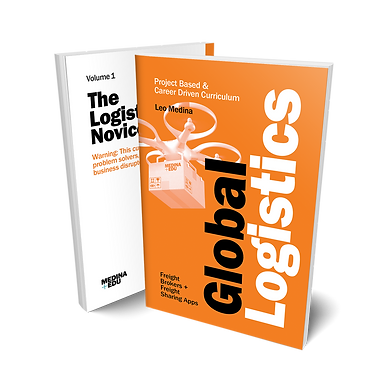Volume 1
LOGISTICS BASICS
This is your introductory volume to all things logistics


The Perfect Storm
With the baby boomer generation nearing retirement and an aging workforce, there is a huge discrepancy between job openings and qualified candidates. This unit sets the framework to bridge this gap by developing a pathway built for careers and addressing: the explosive growth of e-commerce and how it is affecting the retail industry, the qualities hiring managers are seeking, and the on-demand skills that meet these needs.
E-Book
What is Logistics?
Logistics, the management and flow of goods and services, is key in running virtually any business, affecting its operations, profits, and consumers. This unit details the components of logistics, what makes for good logistics management, and addresses logistical activities in data forecasting, customer service, and the transportation of goods.
E-Book


A High Growth Industry
The logistics trade contributes to half of the world’s GDP income. This unit covers this high growth industry on a global scale among its four geographical regions including the government’s role in promoting the industry’s growth, the surge in consumer spending, and the projected growth of the global logistics market.
E-Book
Careers of the 21st century
From supply chain managers, to logistics analysts and engineers, to commercial truck drivers—these are some among many careers that have been generated by the booming, ever-expanding logistics industry. This unit details the responsibilities entailing each career path, their respective contributions to the logistics industry, and the skills and education required from each pathway.
E-Book


The Amazon Effect
Disrupting age-old industries through its innovation and scale, Amazon has become a household name that has expanded its reach across the globe. This unit dives into its primary beginning as an online bookstore and its evolving business strategies including Amazon’s customer-centric emphasis, innovative logistics and technology, and high-demand job openings that has made Amazon the
e-commerce powerhouse of a company to date.
E-Book
Walmart Supply Chain
Ninety-five percent of American consumers have made a purchase from Walmart—the nation’s biggest retail corporation. This unit covers the massive retailer from its humble beginnings to its expansive growth that has operating stores in all fifty states and even overseas, detailing Walmart’s innovative management of their supply chain, their strategic alliances with suppliers, and their use of e-commerce technology that has propelled Walmart to become the ubiquitous retailer of the nation
E-Book


UPS, Fedex, DHL, and USPS
You’ve probably received packages from a courier service like UPS or FedEx, a logistics service that specializes in parcel delivery. This unit reveals the four major parcel delivery services’—UPS, FedEx, DHL, and USPS—including their background, business model, operations strategy, and respective strengths and weaknesses within the courier logistics industry.
E-Book
Freight Brokers+ Freight Sharing Apps
An integral yet overlooked part of logistics is the freight and trucking industry responsible for carrying large shipments, and often over long distances. This unit looks into the business behind freight brokers and shippers in connecting carriers to cargo, identifying routes, and arranging and tracking shipments. This unit also unveils the industry’s integration of e-commerce in adopting the “share economy” model, much like Uber, through the novel freight-sharing apps Cargomatic, Uber Freight, and Amazon Relay, transforming the logistics of the freight industry as we know it.
E-Book


Applied Analytics
To succeed in a career in the Logistics Industry, you must be skilled at locating information presented in different forms, and over various platforms. They should be able to receive this information, analyze what the writer is communicating, and then apply what they have learned in their workplace. This often requires employees to adapt the information they have read to fit their specific circumstances. Learning how to effectively, analyze and isolate pertinent information is a skill that will help you succeed in the workplace and climb the career ladder in the industry.
E-Book